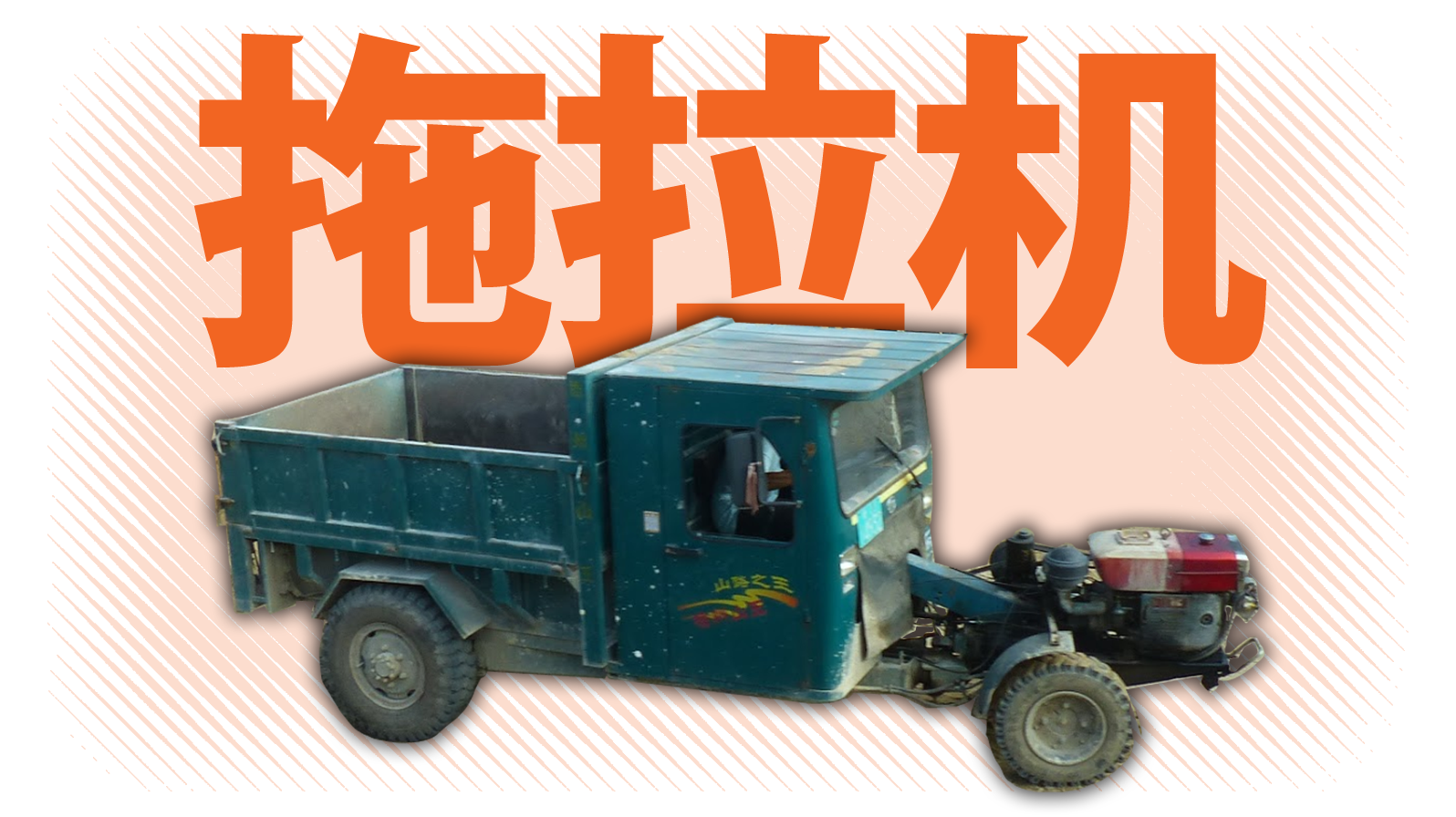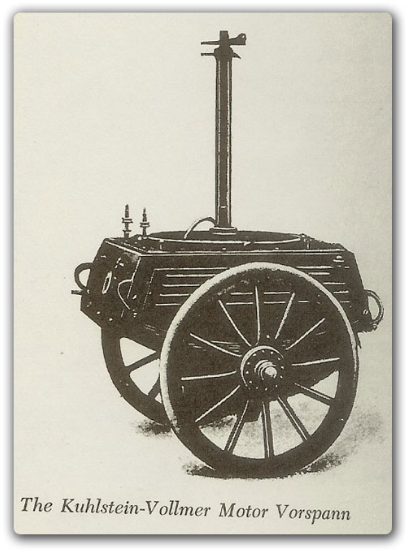How China Built Some Of The World's Most Versatile Vehicles Around A $150 Engine
I visited China and found myself enamored by a vehicle so simple that it didn’t even have a hood to cover its single-cylinder diesel engine.

Back in 2015, I visited China and found myself enamored by a vehicle so simple that it didn't even have a hood to cover its single-cylinder diesel engine. That basic motor, which can be cranked by hand, is a part of what I later found to be one of the most incredible modular vehicle architectures I'd ever seen.
Shortly after arriving in Guilin following a 27 hour train-ride from Xi'an that was as terrible as it sounds, my friend Justin and I discovered on the streets of Guilin a truly incredible machine—one that ticked every car enthusiast box in my mind: Quirky, versatile, capable, easy to work on, and dirt cheap.
At the time, I didn't know what this thing was, all I knew was that it was the first stock, street-legal vehicle I'd ever seen with a completely exposed engine, and it steered kind of funny. Also, it was everywhere, working on farms, hauling dirt at construction sites, and popping around the city carrying cargo. Everywhere I turned, I saw a tiny diesel engine hanging off the front of various types of vehicles, so I had to learn more.
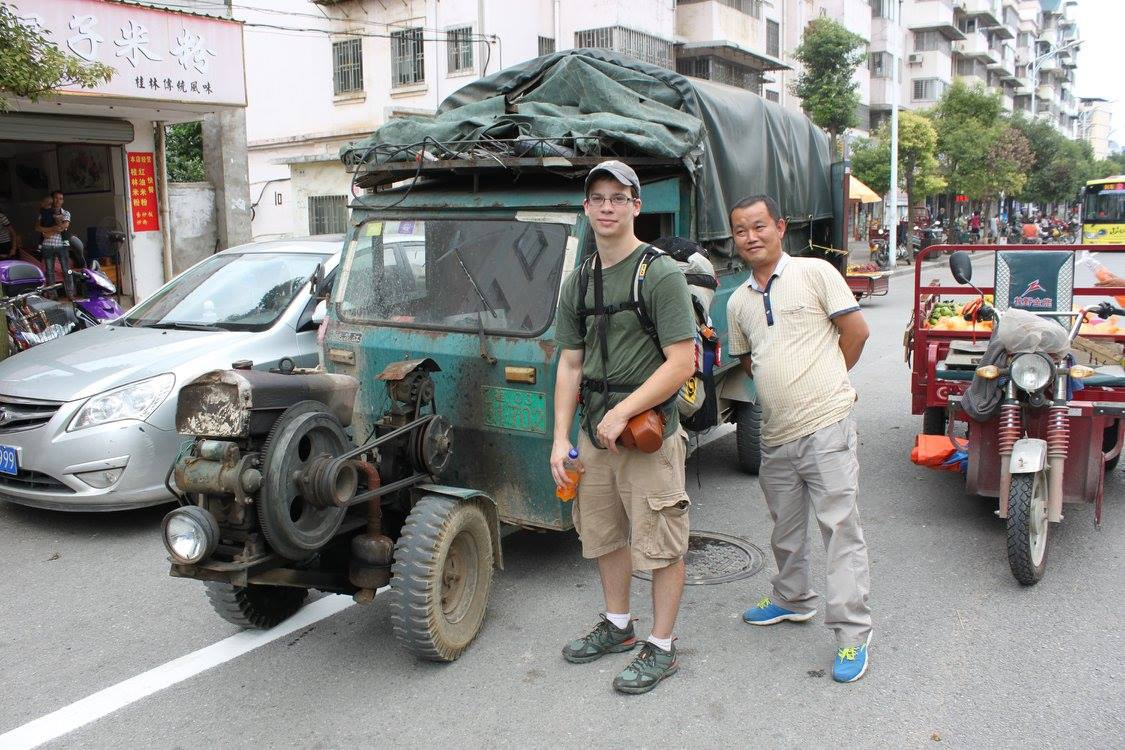
My friend asked a local what the thing was called, and the gentleman told us "Tuo La Ji," which is written 拖拉机 in Chinese.
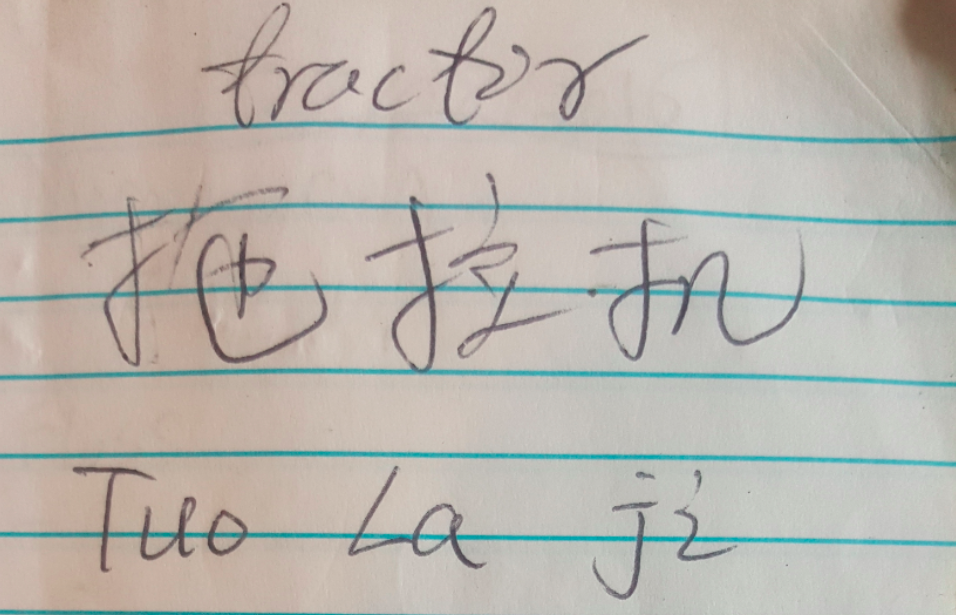
It means "tractor," but the individual characters mean "Drag," "Pull," and "Machine," which is fitting, really.
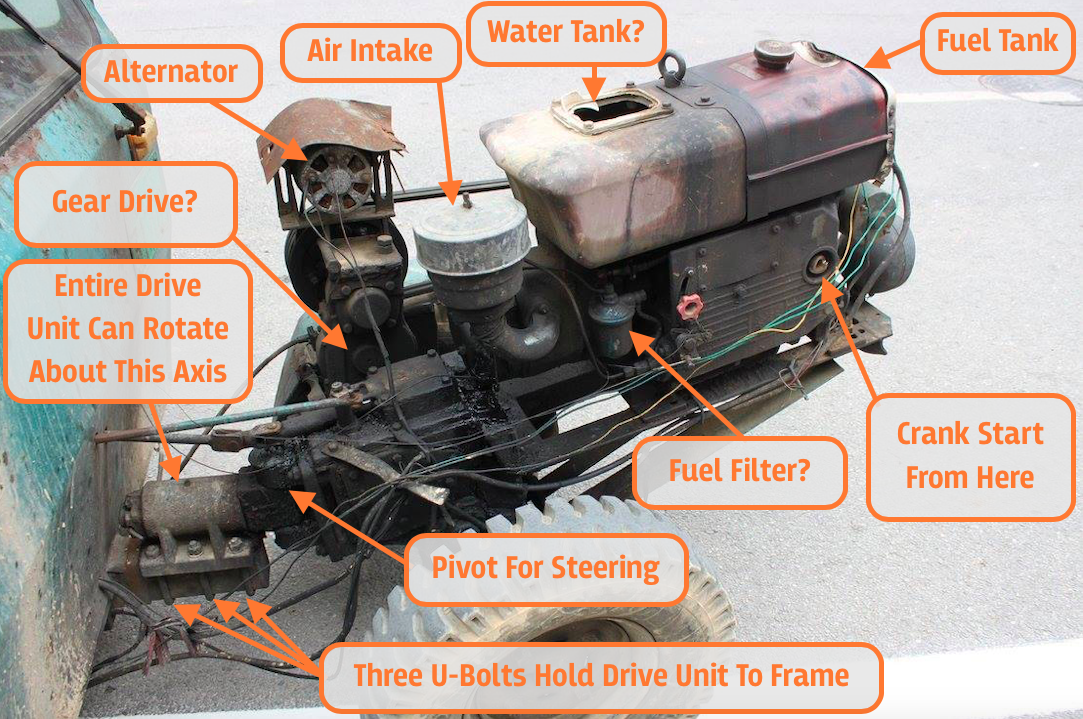
Because I'm having a hell of a time finding solid information on the humble Tuo La Ji (seriously, I just watched a man dressed in a Spiderman suit operating his tractor just so I could learn more about how these things work), I'm going to have to make a few assumptions on how they operate. But for the most part, it's pretty straightforward.
The drive unit consists of a flat-mounted diesel engine with its crankshaft at the front of the vehicle and its head farther rearward. The intake is on the right side and the exhaust exits the engine on the left. Vertically above the flat-laying cylinder is a fuel tank and what I assume to be a water tank that needs to be replenished as the engine heats the H2O.
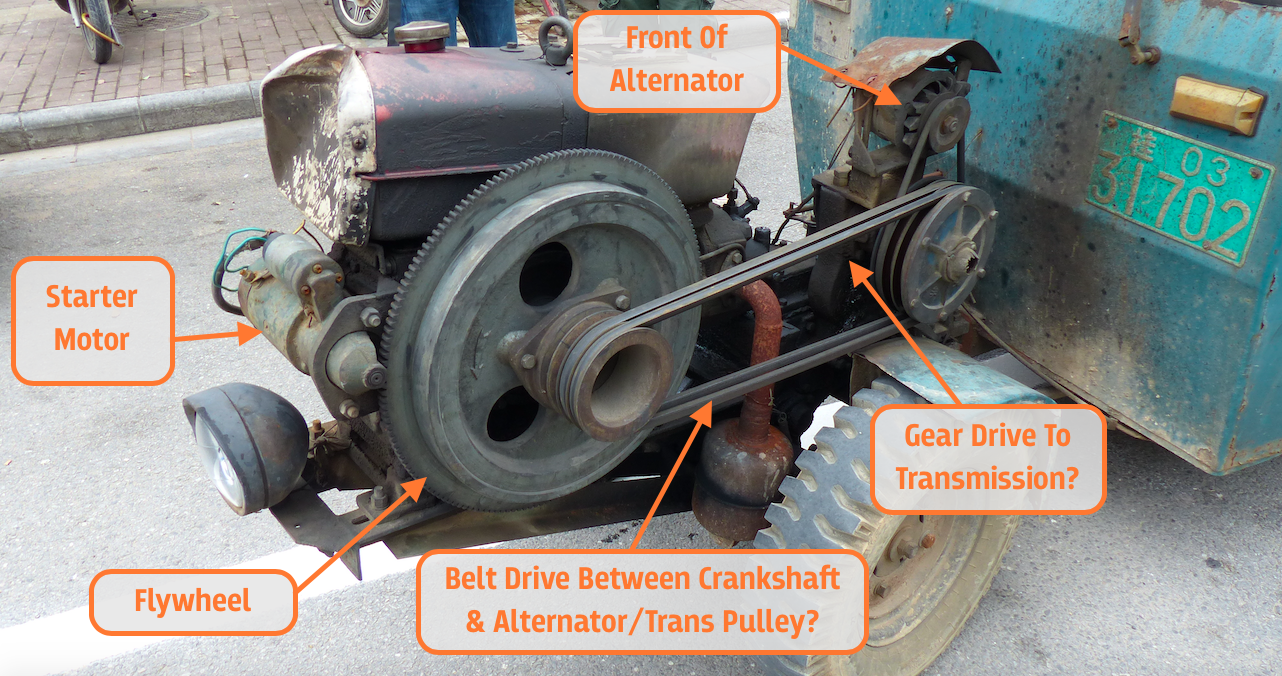
Though there's a starter motor at the front of this engine just above the headlight, the driver actually used the hand crank on the right side of the vehicle to fire up the diesel motor; it was impressive. The motor apparently sends power to the front wheels via the flywheel-mounted pulley, through two rubber belts, and to another pulley that drives the alternator and also the transmission via what I'm assuming is a vertically-oriented gear drive.
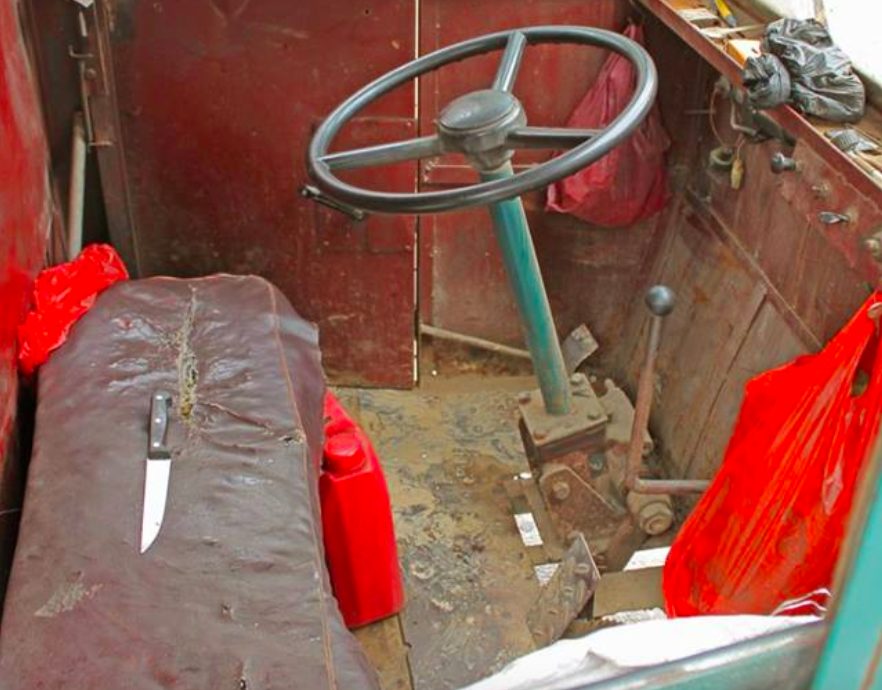
As for steering, the entire front end pivots. This particular vehicle has a steering wheel, though some have handlebars. The photos above don't show any sort of drag link that might push an arm that would cause the front drive unit to pivot about that joint just in front of the U-bolts, but instead, it shows a shaft with a pseudo-U-joint. But that shaft appears to go to the transmission, so I'm assuming the steering pitman arm and drag link—shown below on another vehicle I spotted—are just hidden from the pictures.
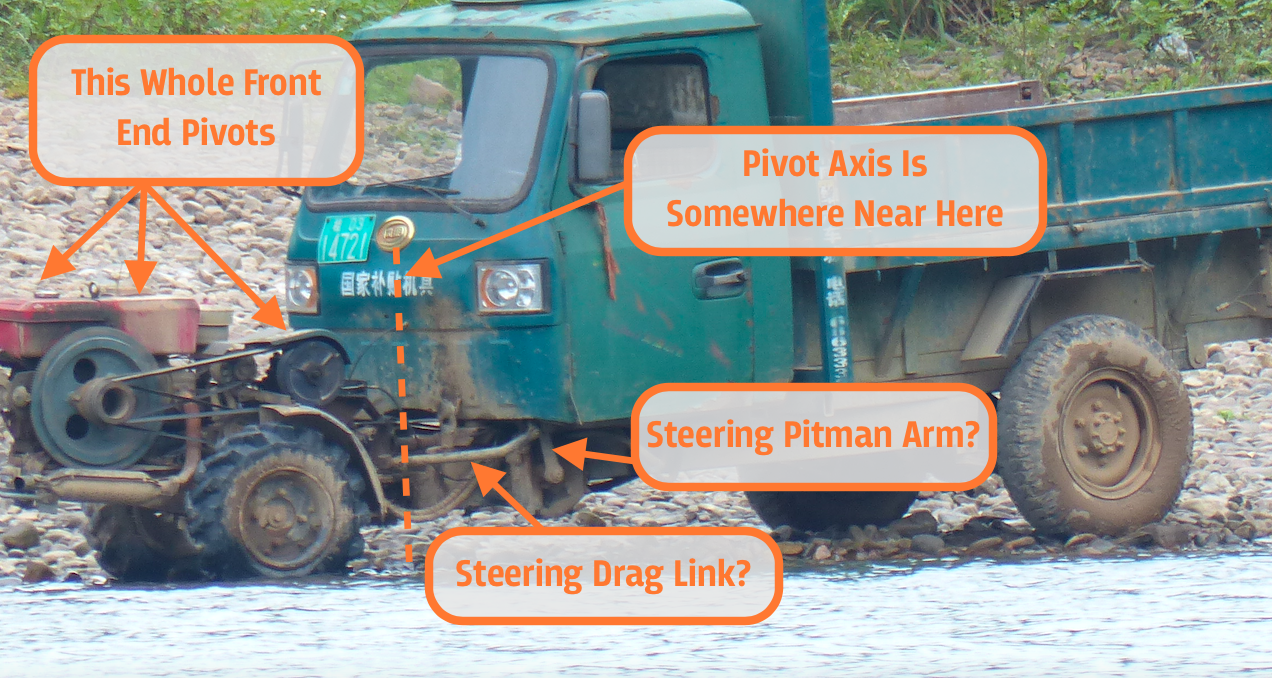
Some of these machines are apparently available in four-wheel drive, with a rear output yoke appearing to come off the back of the transmission.
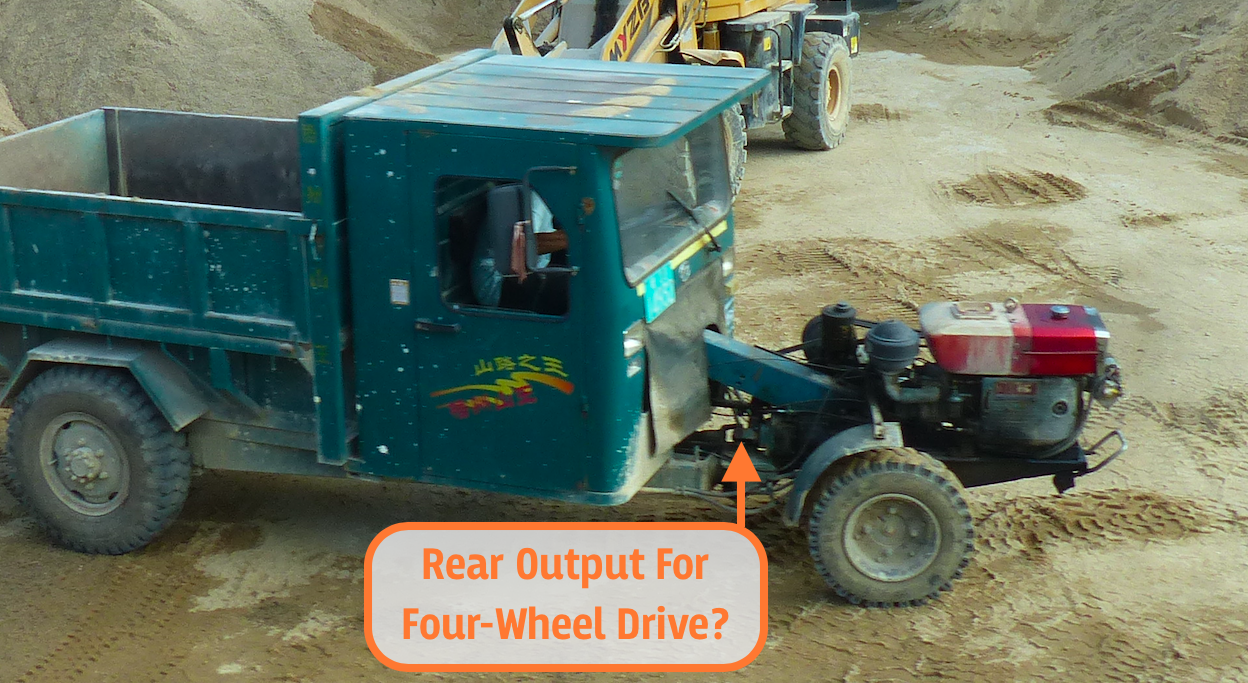
Here's a look at a four-wheel drive Tuo La Ji carrying a heavy load. Watch as the operator shifts into 4x4:
What's most amazing about this setup is that it's so modular. I stopped by a store in Guilin that sold the engines, which cost about $145 each. Just look at this sea of motors:
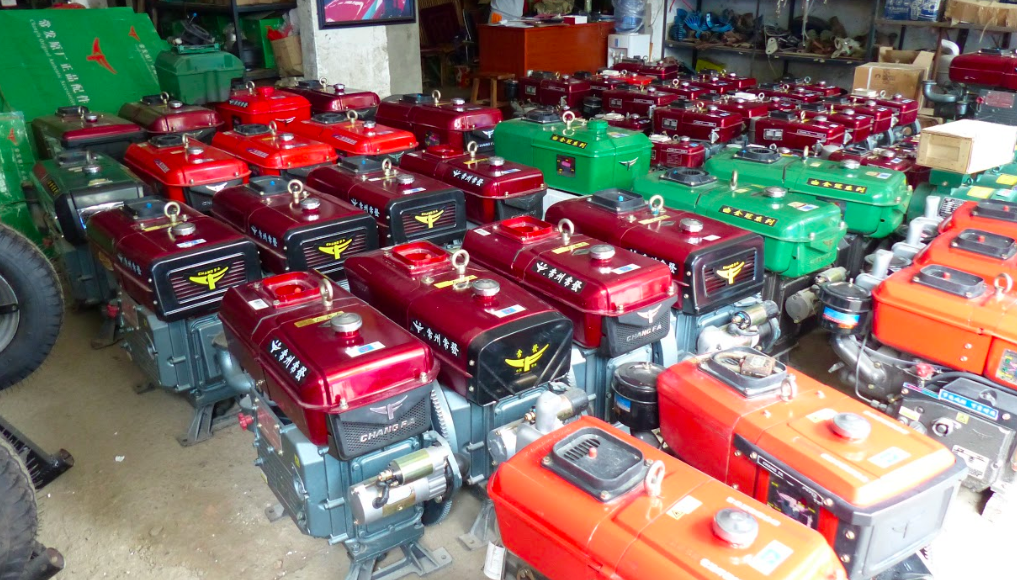
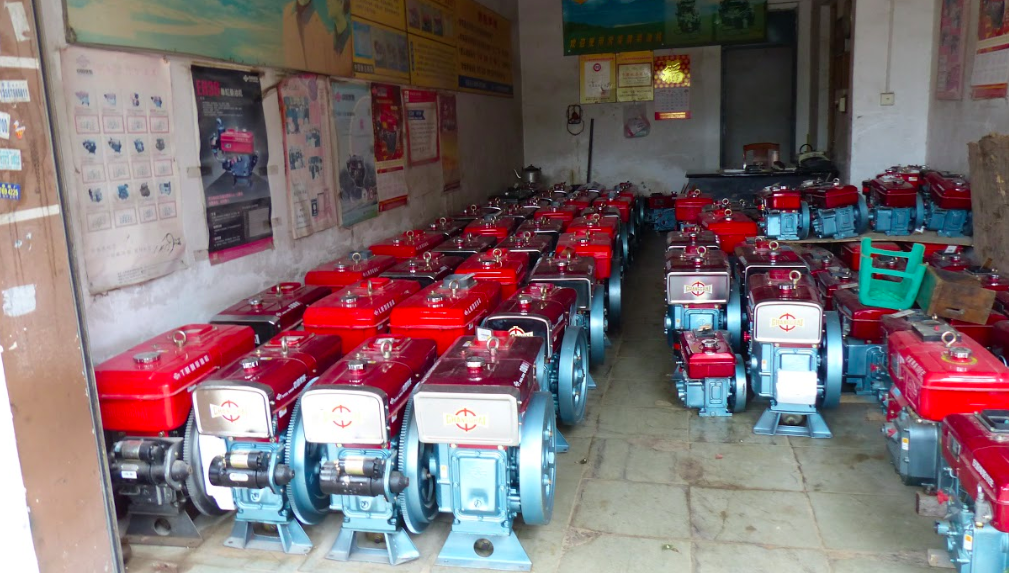
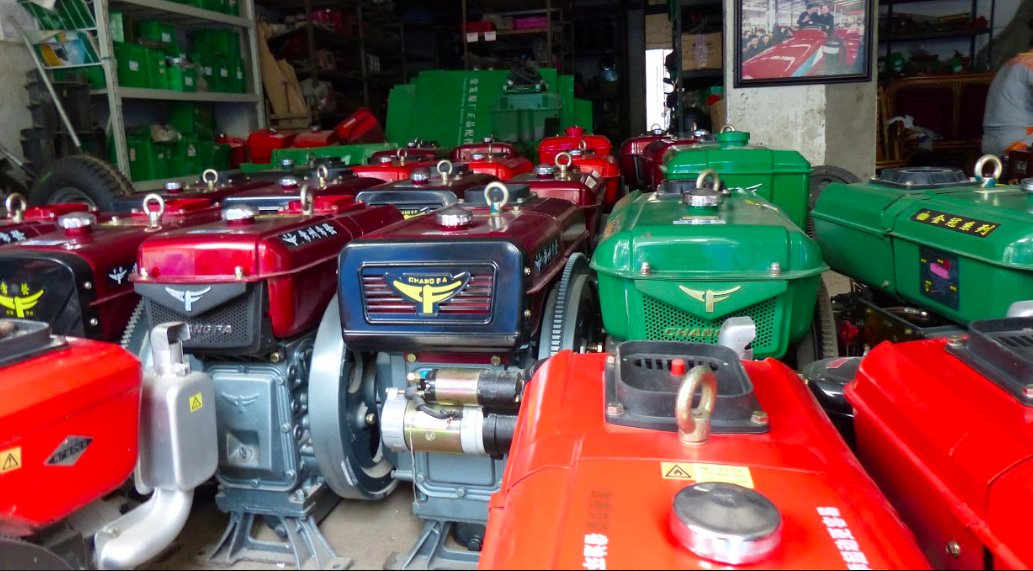
Off to the side were a couple of subframes (the left one is for a push-style tractor setup), and nearby were a few posters showing what this little motor can do.
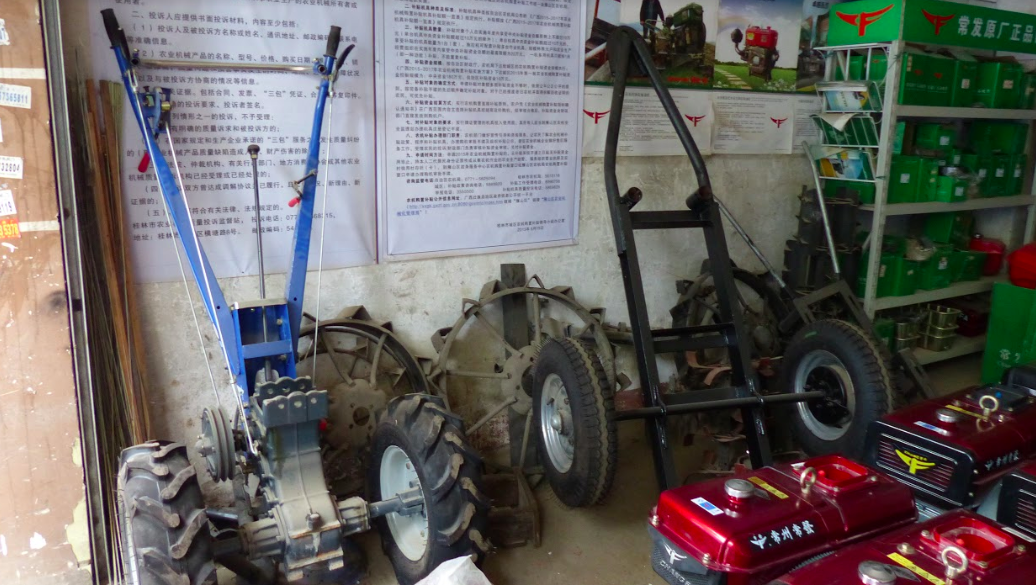
One advertisement showed a man working his field using the roughly eight horsepower engine:
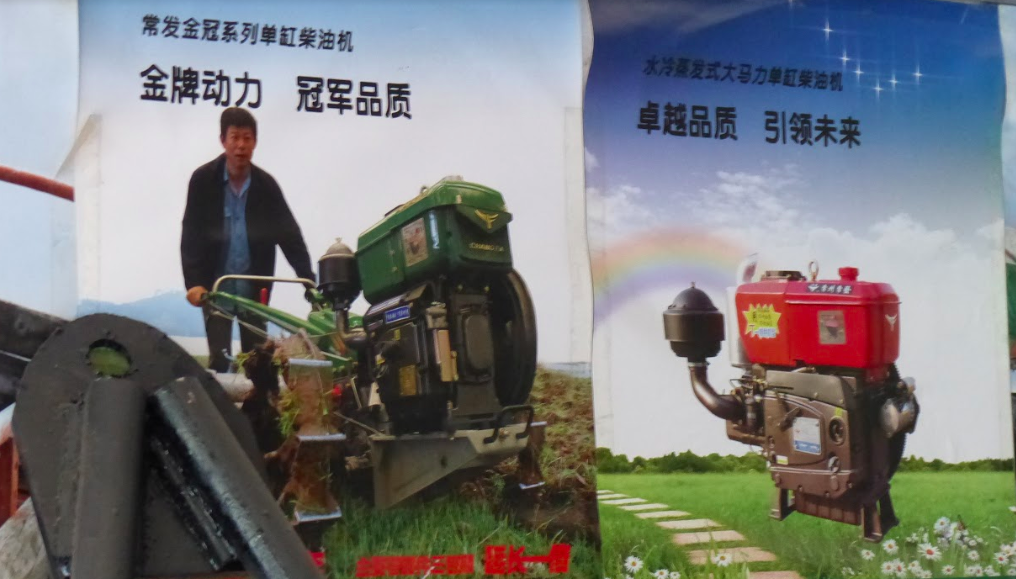
The whole front drive unit from the initial steering-wheel equipped Tuo La Ji I showed before—the engine, gearbox, front subframe, fuel tank, water tank, exhaust, intake, alternator, all of it—can apparently be detached simply and thrown onto another vehicle. Possibly even a handlebar-equipped one like this:
The video above shows a Tuo La Ji in operation. It's just amazing and, if I'm honest, a bit confusing. There are some levers on the handlebars that actuate cables; one appears to be the throttle lever. Maybe the others operate some sort of brake—possibly one per wheel? There are also levers ahead of the driver that seem to allow for transmission shifting, and then there appears to be a foot clutch? Here's another look:
I'm not entirely sure how these things work, but that just adds to the allure of these modular, exposed-engine machines.

Jason Weighs In:
Not everything about David's taste in automobiles is matched with mine, but in that big Venn diagram of Cars Jason Likes and Jeeps Cars David Likes, there is a good-sized overlap, and I think that overlap can be safely labeled Alarmingly Crude But Fascinating Vehicles. Like David, I've been fascinated by the Tuo La Ji trucks for years, and while there are many aspects of them I'm drawn to, I think the biggest one is that the Tuo La Ji is unique in the automotive universe in that the goal wasn't to create a horseless carriage: The goal was to create a horseless horse.
And that's exactly what they did.
I wish I knew more about who "they" were, but these things have become so pervasive and popular in China over the decades that I'm not even sure it's possible to pin down one clear original source.
I know the fundamental idea of a horse replacement has been around a while; in the late 1800s, when automobiles were first becoming practical, there were a few attempts to make a motorized driving unit that could fit existing horse-drawn carriages, vans, wagons, etc, to provide a kind of stop-gap, transitional solution that would let people keep their existing horse-drawn assets.
These things never really caught on, though, which is why I consider the Tuo La Ji such a unique case, because those sure as hell did catch on.
Those Tuo La Ji trucks steer in such a strange, awkward-seeming way and are so inherently modular because, unlike pretty much every other sort of truck out there on the road, these were based on the fundamental design of a big mammal pulling something behind it.
They're even sold (from what I can tell) in a similar way to how horses and carriages/wagons/hansom cabs/whatever were sold: the power unit and the pulled unit were sold separately.
There are whole companies building truck cabs and beds designed to connect to one of these diesel horses, of varying levels of refinement and style and function, and there's also home-built solutions as well.
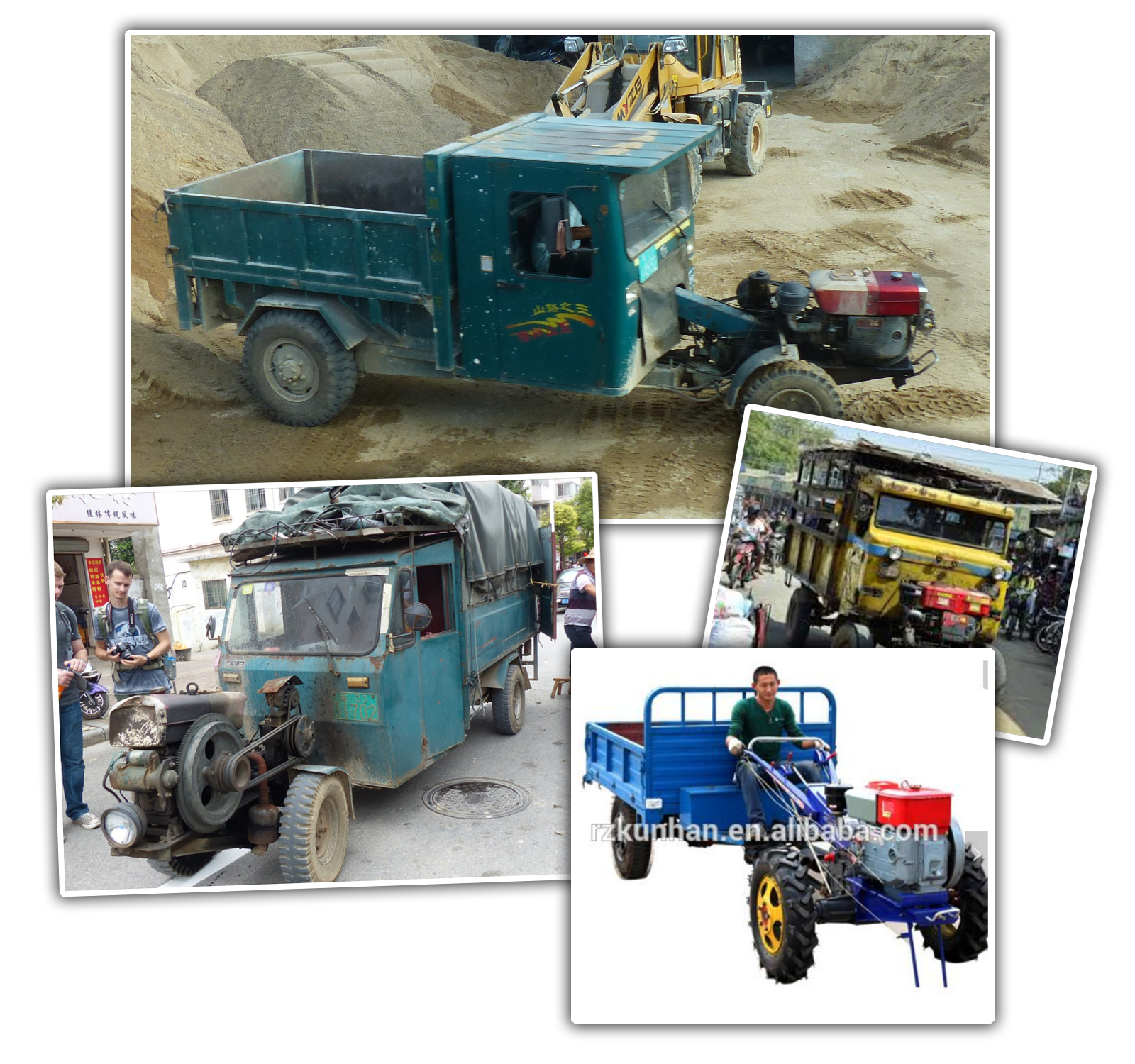
Some of those cabs and bodies look fairly refined, with lights and indicators and windshield wipers and that sort of thing. There's effectively a number of truck manufacturers in China that are building trucks as we know them, just from the A-pillar back, and the customer is responsible for getting the bits that make them go.
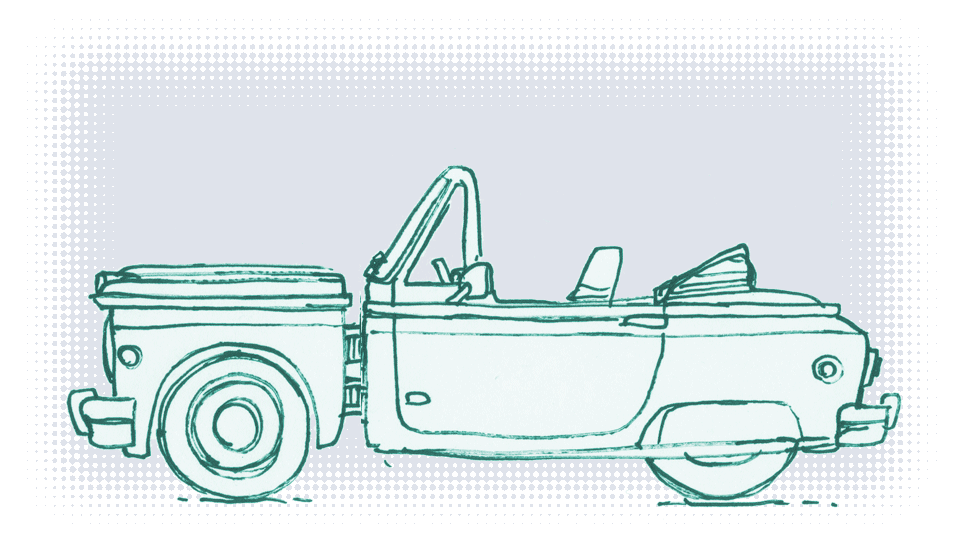
I've spent a bit of time wondering what things would have been like if the horse-and-buggy model had somehow stayed relevant in auto design, but, really, I didn't have to do that much imagining, because in at least one place, and in one particular segment of the market, that's exactly what happened.
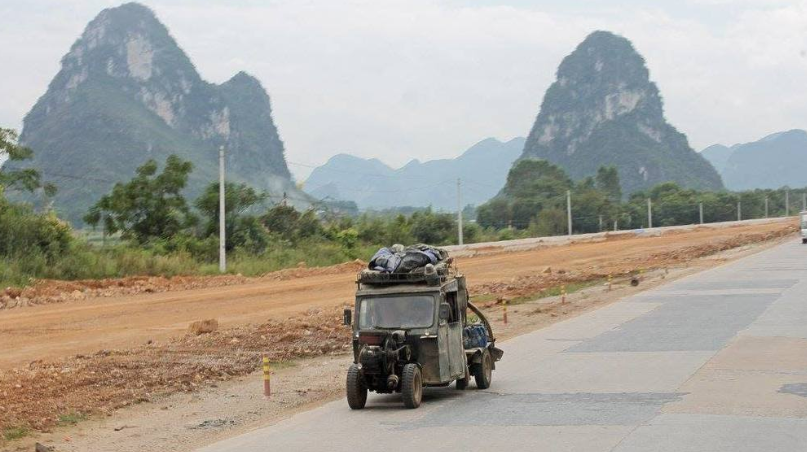
I've heard that the Tuo La Ji trucks are starting to fade out, I suppose getting replaced by much more refined and modern conventional trucks and vehicles. While this isn't really shocking, I hope that there will always be some specialized niches where a mechanical, diesel-slurping wheel-horse will remain the best solution to a given (likely muddy and awkward) problem.
Also, I hope I get to drive one of these one day. If I can find one rusty enough, maybe I can talk David into buying it and we'll drive it to Moab or something.
